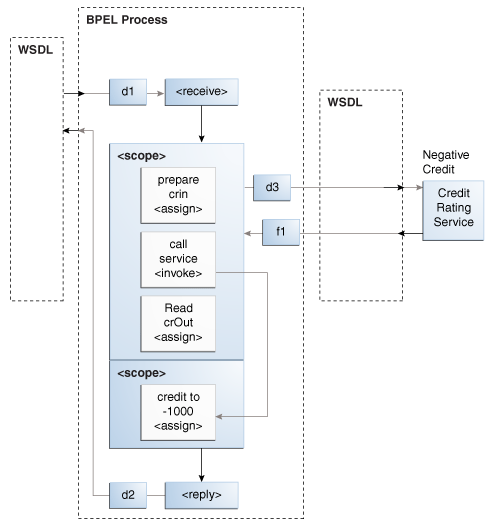Introduction to a Fault Handler
Fault handlers define how the BPEL process service component responds when target services return data other than what is normally expected (for example, returning an error message instead of a number). An example of a fault handler is where the web service normally returns a credit rating number, but instead returns a negative credit message.
Figure 12-1 provides an example of how a fault handler sets a credit rating variable to -1000.
The code segment in the following example defines the fault handler for this operation in the BPEL file:
<faultHandlers>
<catch faultName="services:NegativeCredit" faultVariable="crError">
<assign name="crin">
<copy>
<from expression="-1000">
</from>
<to variable="input" part="payload"
query="/autoloan:loanApplication/autoloan:creditRating"/>
</copy>
</assign>
</catch>
</faultHandlers>
The faultHandlers tag contains the fault handling code. Within the fault handler is a catch activity, which defines the fault name and variable, and the copy instruction that sets the creditRating variable to -1000.
When you select web services for the BPEL process service component, determine the possible faults that may be returned and set up a fault handler for each one.
